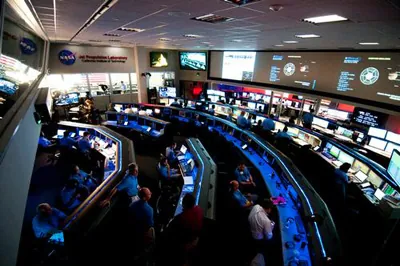
NASA’s JPL Center Faces Workforce Cuts Again – What it Means for the Future of Space Exploration
2024-11-12
Author: Wai
Introduction
In a shocking new development, NASA's Jet Propulsion Laboratory (JPL) in California is once again reducing its workforce, laying off 325 employees – roughly 5% of its workforce. This decision comes just nine months after a previous cut of 530 positions earlier this year, amid ongoing budget challenges and strategic reevaluations within the agency.
Understanding the Budget Constraints
The current cuts have resulted in JPL slashing nearly one-eighth of its workforce in 2023 alone. Leshin cited “continued funding challenges” and an unclear future as NASA reassesses its priorities. With the budget for the Mars Sample Return drastically reduced from nearly $1 billion to below $300 million, JPL's leadership is under pressure to adjust staffing levels in response to the shifting fiscal landscape.
The Staggering Cost of Space Exploration
The challenge facing JPL is not simply a matter of budget cuts; it also reflects broader changes in the landscape of space exploration. Recent reports indicated that an independent review team deemed JPL's ambitious Mars Sample Return plan unfeasible, estimating a staggering cost of between $8 billion and $11 billion. As NASA explores alternatives, including collaborations with private companies like SpaceX and Rocket Lab, it remains uncertain whether JPL will retain its leadership role in any restructured mission.
JPL’s Historical Significance and Future Prospects
JPL has a rich legacy in the realm of planetary exploration, having managed some of NASA’s most iconic spacecraft, including the Voyager probes and the Mars rovers. However, with competition arising from other institutions and private firms, JPL faces an uncertain future. Currently, the laboratory is engaged in projects like the $5 billion Europa Clipper mission, but lacks any flagship deep-space missions that necessitate a large workforce.
Conclusion
In the words of Leshin, JPL is a strong organization with a "dazzling history" and an unwavering commitment to exploration. While this latest round of layoffs is undoubtedly painful, it may be a necessary step to ensure the laboratory's alignment with evolving priorities in space science.



 Brasil (PT)
Brasil (PT)
 Canada (EN)
Canada (EN)
 Chile (ES)
Chile (ES)
 España (ES)
España (ES)
 France (FR)
France (FR)
 Hong Kong (EN)
Hong Kong (EN)
 Italia (IT)
Italia (IT)
 日本 (JA)
日本 (JA)
 Magyarország (HU)
Magyarország (HU)
 Norge (NO)
Norge (NO)
 Polska (PL)
Polska (PL)
 Schweiz (DE)
Schweiz (DE)
 Singapore (EN)
Singapore (EN)
 Sverige (SV)
Sverige (SV)
 Suomi (FI)
Suomi (FI)
 Türkiye (TR)
Türkiye (TR)